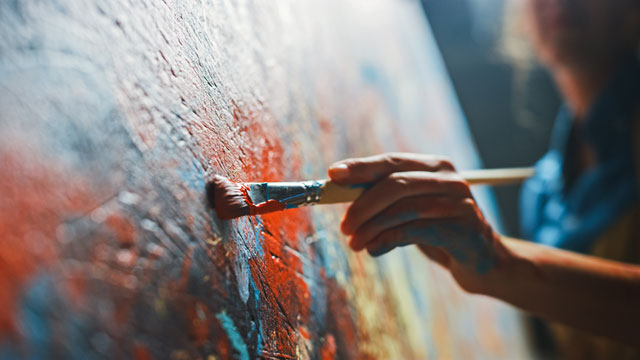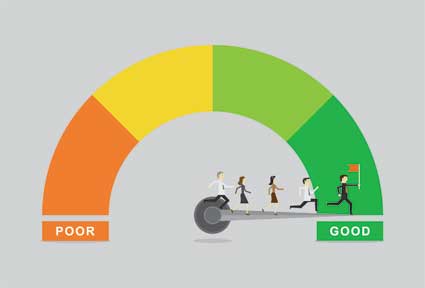Interior designers need to have a wide body of knowledge in order to have a career as an interior designer. This body of knowledge includes things they need to know to be professional, as well as things they need to know about design.
- Professional practice
- Design
- Products and materials
- Interior construction, codes, and regulations
- Communication
- Human environment needs
Interior designers are charged with creating spaces that are not only functional, but also aesthetically pleasing. These spaces must meet client requirements, as well as government regulatory requirements. As a designer, you are responsible for ensuring the success of a project, which means that you will have to have a wide body of knowledge.
Professional practice incorporates the practical knowledge interior designers must have to be professionals within the field. This includes knowledge of:
-
Contract administration (bidding/negotiation, contract documents)
-
Business practices
-
Consultant work (consultation, collaboration, integration)
-
Project management (scope, schedule, budget, fee)
-
Observation, punch lists/deficiency reports
-
Business processes (marketing, strategic planning, accounting procedures, real estate issues)
-
Problem review and evaluation during alteration and construction
-
Client consultation
-
Ethics
-
Professional certification, licensing, and/or registration requirements
-
Legal forms of business (sole proprietorship, corporations, partnerships)
-
Legal responsibilities
-
Professional design organizations
The professional practice knowledge area is not only informed by design, but also by business practices, including financial considerations, time delivery, human resources, as well as ethics, professional organizations, and project management.
Interior designers must have a breadth of knowledge when it comes to design. They must be very knowledgeable about human behavior that may influence their designs and inform how a space may be used. For example, designers need to know about architectural styles and colors, as well as where to place signage, so that people can navigate their way through a space.
Additionally, designers need to understand the full process of design so they can successfully complete their projects through every phase.
Here are some specific interior design elements that designers need to know about:
-
Interior components design and detailing (custom furniture, cabinetry, mill work, floor patterning, textiles)
-
Design process (preliminary design, schematic design, design development, analysis)
-
Space planning (non-load bearing interior construction)
-
Aesthetics
-
Design concept
-
Design(s)
-
Lighting design
-
Problem solving
-
Visual representation types (bubble diagrams, adjacency matrices/charts, stacking/zoning diagrams, block plans, square footage allocations)
-
Elements and principles of design
-
Function
-
Quality (interior environment)
-
Sketching
-
Color concept (selection and application)
-
History (art, architecture, interiors, furnishings)
-
Two- and three-dimensional design
-
Color principles, theories, and systems
-
Decorative elements selection and application
-
Wayfinding/signage
Products and Materials
Interior designers must have an in-depth knowledge of products and materials they may use on a project. They must also have knowledge of resources that are available to help them learn more about products and materials that they may use.
In addition to having broad knowledge of available products and materials, many interior designers must also be aware of which materials and products are best for certain settings and types of projects. For example, the materials that are used in a high-traffic restaurant may not be the same materials that are used in a residential design.
Here's an overview of what interior designers need to know when it comes to products and materials:
-
Materials (products, sources, selection, cost, installation, maintenance, specifications)
-
Furnishings, fixtures, equipment, drawings, specifications, and installation
-
Finishes (selection, cost, schedules, plans, specifications)
-
Specifications
-
Fixtures (location and specifications)
-
Furnishings
-
Supplier/vendor requirements (information, installation plans, shipping instructions)
-
Cabinetry
Interested in learning more? Why not take an online Interior Design course? -
Equipment documents (location and specifications)
-
Furniture documents (location and specifications)
-
Product attributes (selection, cost, application, properties, performance criteria)
-
Installation methods and costs
-
Schedules
-
Sustainable resources
Additionally, if a designer is working on a LEED project, the designer may also need to know about LEED-certified products and materials.
Whenever a designer works on a project, the designer needs to be sure that all building materials, processes, designs, and more meet codes and regulations. This means that designers need to be aware of safety standards and guidelines for all aspects of the design, construction, and use of a space.
This body of knowledge requires that designers know about:
-
Building codes, laws, regulations; life safety standards (movement, stairs, corridors, ramps, exits) and requirements; welfare
-
Lighting fixtures and lamps selection, application, and specifications
-
Building systems (mechanical, electrical, plumbing, structural)
-
Working drawings for non-loadbearing interior construction
-
Permitting processes
-
Specifications for non-loadbearing interior construction
-
Reflected ceiling systems, plans, and specifications
-
Electrical plans and preliminary specifications
-
Schedules
-
Analysis of life-safety requirements
-
Data/voice telecommunication systems and plans
-
Fire and life-safety principles (compartmentalization, detection, suppression)
-
Non-loadbearing interior construction systems and methods
-
Acoustics
-
Lighting/daylighting systems
-
Security systems
-
As-built drawings
-
Power distribution systems and plans
-
Energy management
-
Indoor air quality
Remember: If a designer is working on a LEED project, the designer may also need to know about LEED-certified construction, codes, and regulations.
Designers must be able to communicate with a broad range of people, including their clients and other professionals working on a project. In order to communicate effectively, designers need to be able to communicate orally, through writing, and through graphics or designs.
By communicating effectively, designers can not only help ensure that a project is completed according to their specifications, they can also be sure the project meets all codes and regulations required.
Here are some of the ways interior designers will need to incorporate communication elements into their designs:
-
Oral, visual, and written communication
-
Presentation techniques/media
-
Drawings
-
Preliminary designs, drawings, and sketches
-
Drafting/lettering (manual)
-
Study models
-
Sketches
-
Client consultation
-
Computer-aided drafting and lettering
-
Metric system
Human Environment Needs
The human environment elements that an interior designer needs to be aware of focus on how individuals use a space. These factors may pull from the functions and aesthetics of a space, as well as the values and environment that influence a space. Specific human environment needs may involve:
-
Programming (problem identification, requirements)
-
Research process (studies, data collection, recording, analysis)
-
Client's/user's needs, goals, preferences, and requirements
-
POE (post-occupancy evaluation) process and implementation practices, survey, and observation
-
Analysis of client's/user's needs, activities, and goals
-
Accessibility issues (barrier-free and universal design)
-
Cultural factors and influences
-
Strategic planning (organizational issues)
-
Existing site conditions (measurement and record)
-
Human factors (ergonomics, anthropometrics)
-
Global problem-solving
-
Economic factors, influences, and trends
-
Environmental factors, issues and requirements (sustainability, indoor air quality, energy conservation)
-
Human behavior and design theories
-
Facility issues
-
Project context, location, surroundings, view, and geography
-
Psychological factors and issues
-
Psychology of color
-
Social factors, issues, and trends
-
Conflict resolution
There are some things that all professional interior designers need to keep in mind, regardless of whether they become self-employed, or join an interior design team. Here's an overview of the business side of interior design that designers need to keep in mind.
However, if you, like many designers, wish to be a self-employed – or form a small firm of designers – there are some specific business elements you should have in place. As a designer, your livelihood relies on your ability to successfully complete your design projects. Therefore, regardless of whether you are self-employed or employed by a firm, it's wise to think of yourself as a business-owner.To be a successful business owner, you need to take ownership of your projects and seek opportunities to apply your skills through concerted marketing efforts. You need to interact with other professionals within your community to develop relationships and stay on top of what's going on in your community. You also need to stay abreast of changes within your field through a variety of different resources.
Ten Things You Should Do to Stay in Business as an Interior Designer
-
Make it legal. Obtain the proper certification required by your state. If you plan to specialize in a particular area of design, obtain the necessary specialty education and certificates required, such as LEED.
2. Make it official. If you plan to be self-employed, establish your entity – LLC, S Corp, or sole proprietor -- obtain your business license, buy insurance, establish your bank account and other necessary business materials, and develop an accounting system that allows you to price projects, create invoices, and manage cash-flow efficiently.
-
Maintain your portfolio. Your portfolio of past projects – even your student and pro bono projects – is what will help you get clients. Clients select their designers based on the designer's experience and previous work examples. Your portfolio is your calling card.
-
Market your services. Regardless of whether you're self-employed or working for a design studio, it's important to actively market your design services. Establish a website. Attend networking events. Meet architects, decorators, contractors, and builders to get your name out.
-
Establish a niche. Most designers succeed by establishing a specific area of specialty, rather than being solely a general designer. Your niche may be designing restaurants, offices, creative work spaces, modern homes, environmentally friendly homes, or anything else. If you choose to establish a niche, make sure it's an area of design that you are passionate about and that will continue to interest you for your entire career. Even if you have a niche, you can still work on projects outside of your niche.
-
Stay current. Designers, as with professionals in any field, need to attend continuing education seminars, workshops, and programs so that they can stay abreast of changes within the field.
-
Do a deep dive. Understand a project thoroughly before beginning work. If necessary, meet with a client time and time again, until you are certain that you completely understand the client's goals and needs. Use the tips in this course for help asking the right questions and developing effective design plans.
-
Maintain constant contact. Stay in close touch with your client during a project. Make sure your client knows you are engaged in the project and committed to meeting their specific needs. Staying in touch with your clients will help to ensure that you and the client are on the same page throughout the project. Plus, the constant contact will improve the client's perception of your work ethic. Remember: Word-of-mouth from good clients is the best way to grow your client base.
-
Follow-up. Reach out to your clients after a project is complete. Ensure your clients that you will remain interested in their ongoing needs after the project is complete so you can be sure the project has been successful to their satisfaction. Many designers follow up with their clients by sending surveys after projects are complete. Remember: The finishing touches on a project can help increase referrals.
-
Stay unique. Show off your personality in your designs and interactions. Your clients will choose to work with you, because they have noticed something unique in your designs or method of approaching a project. Embrace your personality and style. Even if you are designing a project in keeping with a specific style of design, your job is to add your own unique flair to the space. Your clients will look for this flair, so show it off in style.
Interior Design Business Checklist
Here's a brief checklist of things you'll need to pull together before you begin your business:
-
Business license
-
Official legal status, such as LLC and Inc.
-
Professional insurance
-
Membership to professional organizations
-
Business bank account
-
Business cards and other materials, such as letterhead and envelopes
-
Web site, including email addresses
-
Telephone
-
Payment system for clients
-
Legal contract for clients and subcontractors, including a relationship with an attorney
-
Accounting system, including a relationship with a professional accountant
-
Business plan
-
Budget, including salaries
-
Marketing strategy
-
Workspace – even if it's in your home
-
Subscriptions to industry magazines, bookmarks for websites
-
Portfolio of past work
-
Price sheet for services and products
-
Sample materials
-
Relationships with architects, plumbers, electricians, and other professionals





























